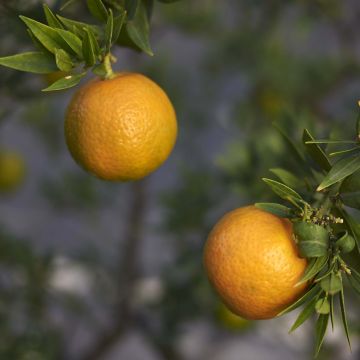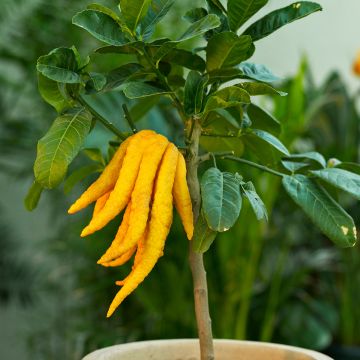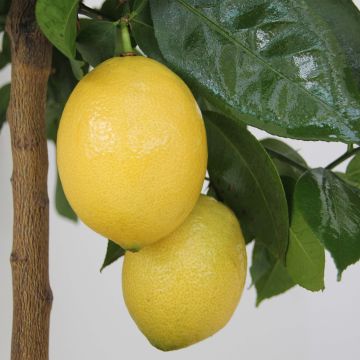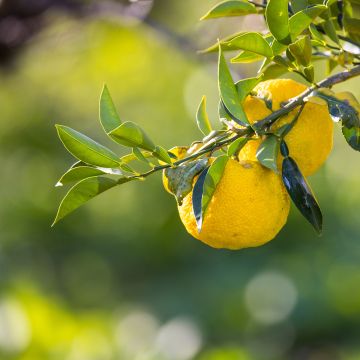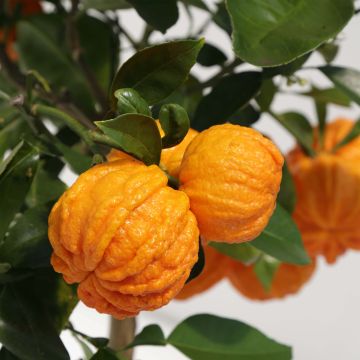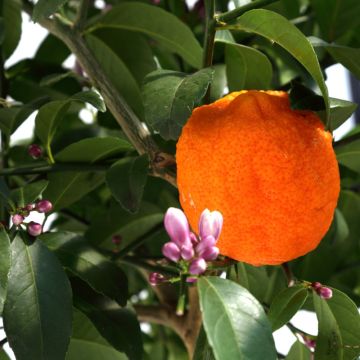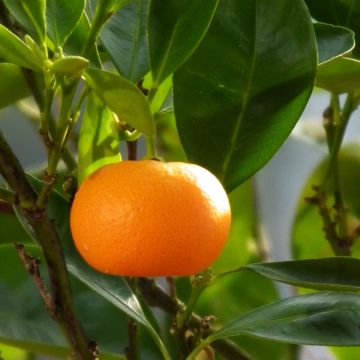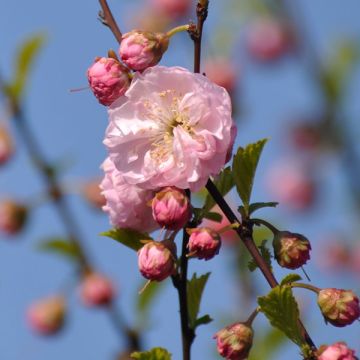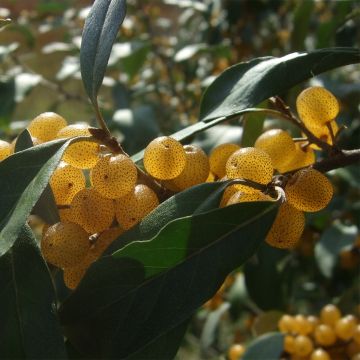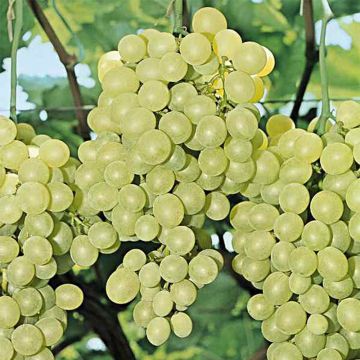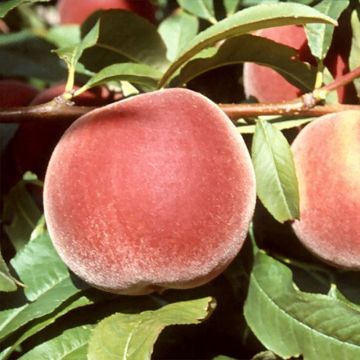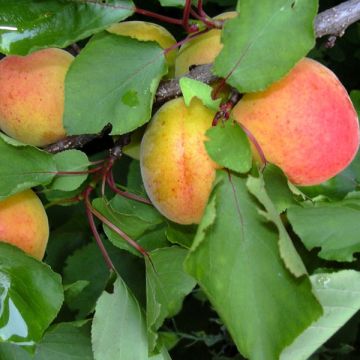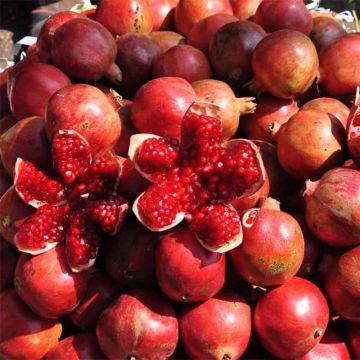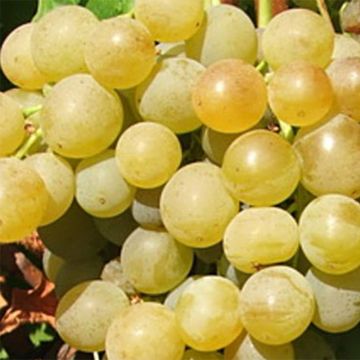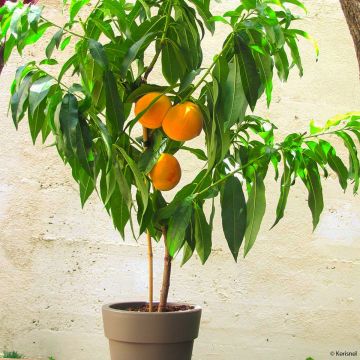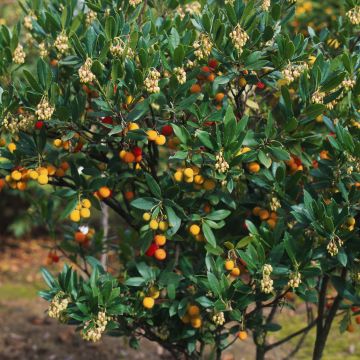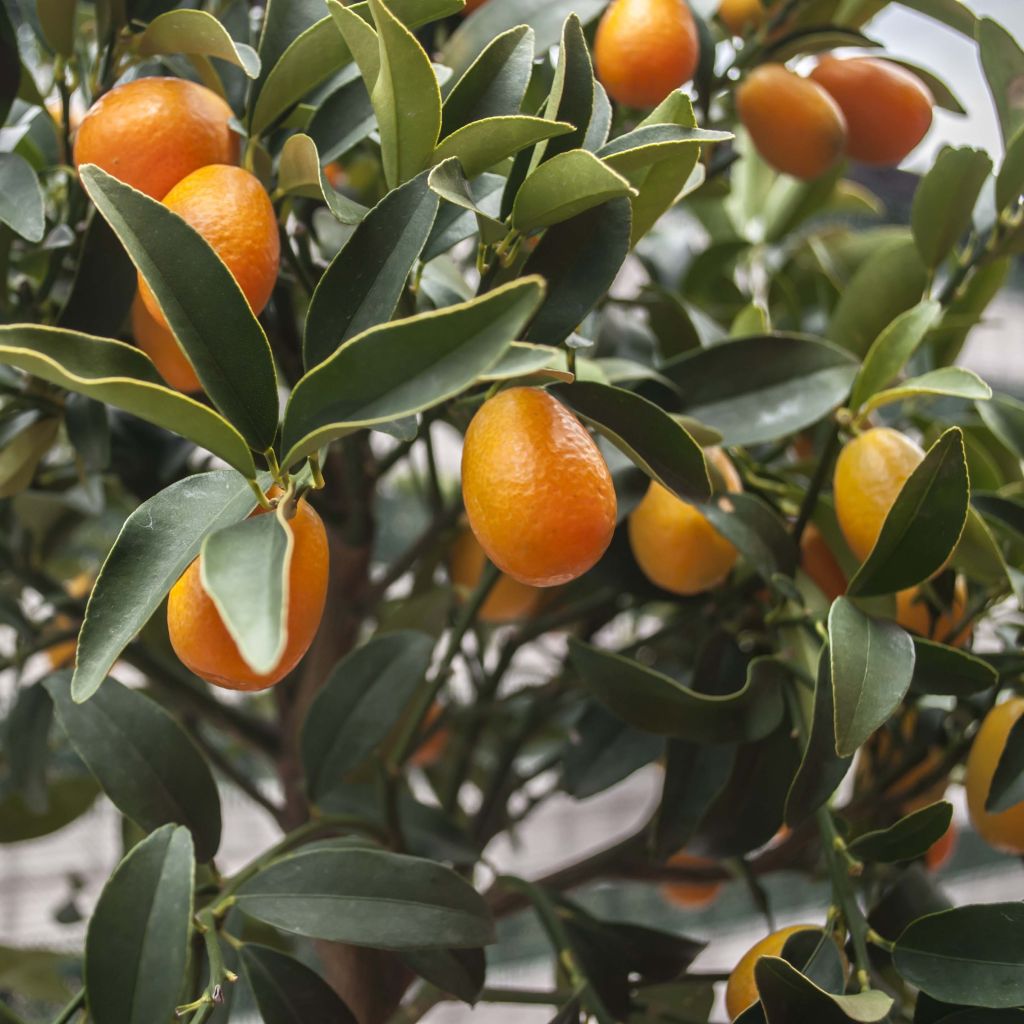

Kumquatine - Citrus Kucle
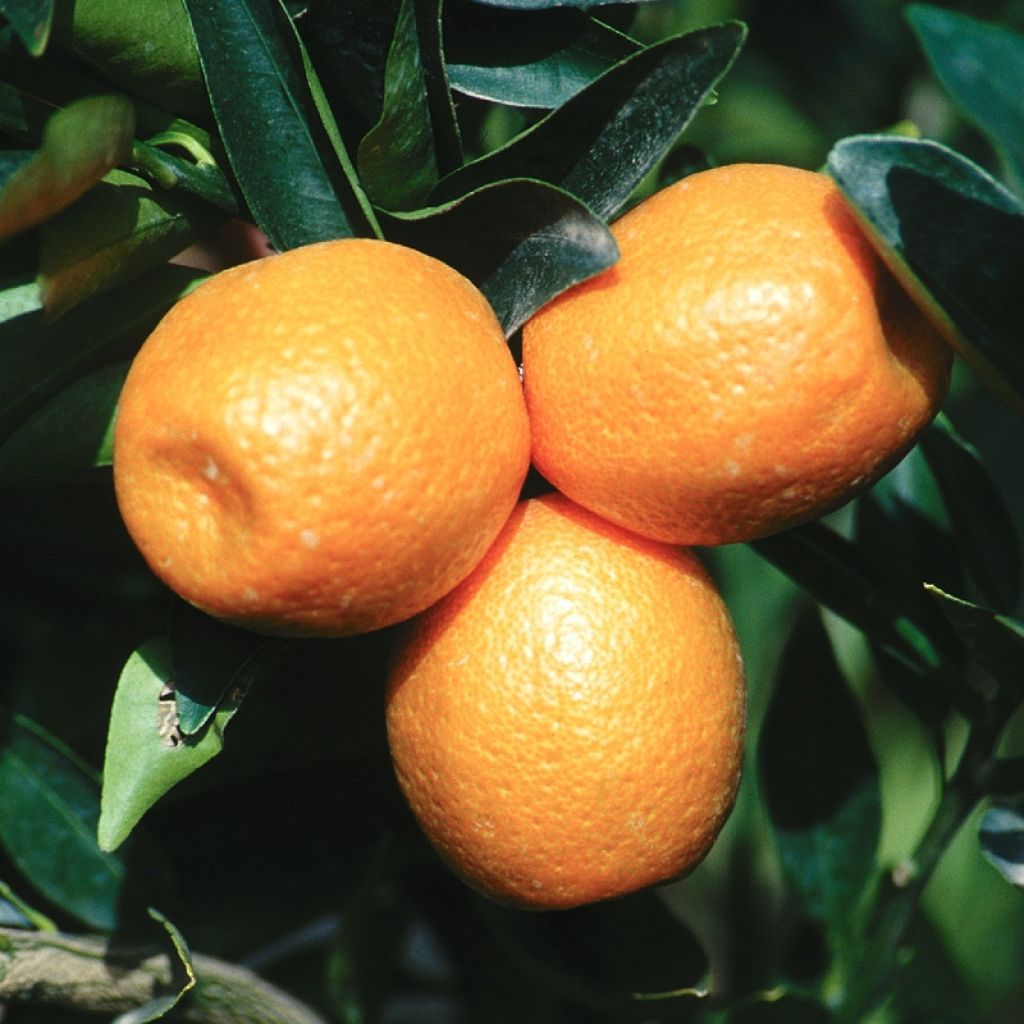

Kumquatine - Citrus Kucle
Kumquatine - Citrus Kucle
Citrus Fortunella margarita x Citrus clementina Kucle
Kumquat x Clementine, Calamondin
This item cannot be shipped to the selected country
Delivery charge from €5.90
Delivery to Corse prohibited
More information
Schedule delivery date,
and select date in basket
This plant carries a 6 months recovery warranty
More information
We guarantee the quality of our plants for a full growing cycle, and will replace at our expense any plant that fails to recover under normal climatic and planting conditions.
From €5.90 for pickup delivery and €6.90 for home delivery
Express home delivery from €8.90.
Delivery to Corse prohibited: UE law prohibits the import of this plant from mainland France to Corse as part of the fight against Xylella fastidiosa. Please accept our sincere apologies.
More information

Description
The 'Kucle', also known as Kucli, or Kumquatine, is the result of cross-breeding between Fortunella margarita (kumquat) and Citrus clementina (clementine). This vigorous and highly decorative bush offers an abundance of orange fruits resembling kumquats, slightly larger than the latter, with a deliciously tangy flavour and a hint of clementine aftertaste. Like kumquats, it is consumed with the skin. Resistant to cold temperatures up to -4°C (24.8°F), it can be grown in open ground only in regions with very mild climates; elsewhere, it is preferably cultivated in a large container, overwintered in a frost-free greenhouse or conservatory.
Named Fortunella in honour of Robert Fortune, who introduced them to Europe in 1846, Kumquats are among the easiest citrus trees to grow in our climates due to their good cold resistance. As for clementines, they need no introduction! Discovered by Father Clément, a French missionary, in the early 20th century in Algeria, these small round citrus fruits, slightly flattened at the ends, with sweet, juicy flesh brighten up our tables in winter when other fruits are scarce.
The 'Kucle' forms a rounded and compact bush, without thorns, from the Rutaceae family. It has a bushy and rather erect habit, reaching a height of about 3 metres (10 feet) at maturity, with a spread of 1.50 metres (5 feet). If grown in a pot, its size is reduced. Its growth rate is moderate. Relatively hardy, it can be planted in open ground in many regions spared by severe frosts. Elsewhere, it will be grown in a pot and stored away at the first frost. The 'Kucle' produces small white flowers with a sweet fragrance characteristic of orange blossom, which give way to small elongated fruits that are harvested when ripe, usually from December to March, when they have acquired a beautiful bright orange colour. The moderately thick skin is free from the burning principle found in other citrus fruits. It has a sweet flavour and a subtle bitter orange scent. The juicy pulp is highly acidic and slightly sweet, with few seeds. The evergreen leaves are a glossy dark green on the upper side, paler underneath. Like all Citrus trees, the 'Kucle' contains essential oil pockets in its leaves, flowers, and fruits, often visible to the naked eye, from which essential oil is extracted by distillation (flowers and leaves) or by pressing (peel).
The fruits of the Kumquatine can be consumed raw but are also used in savoury or sweet cooking, in jam, candied in sugar, or prepared in syrup. Their subtle flavour pairs well with savoury dishes such as tagines or the famous duck à l'orange. The Kumquatine can also be used to prepare refined sweet and sour sauces to accompany Asian dishes. The skin is pleasant on the palate, providing a burst of flavours when the fruit is eaten as is. If you appreciate tangy flavours, you will enjoy the balanced marriage of acidity and sweetness that is unique to this fruit.
Most citrus trees thrive in open ground in Mediterranean coastal regions, where they find the necessary warmth throughout the year. The 'Kucle' is self-fertile, meaning that a single individual is sufficient for fruiting. However, if your citrus tree remains indoors permanently, you will need to occasionally allow pollinators in or delicately perform hand pollination.
Report an error about the product description
Kumquatine - Citrus Kucle in pictures
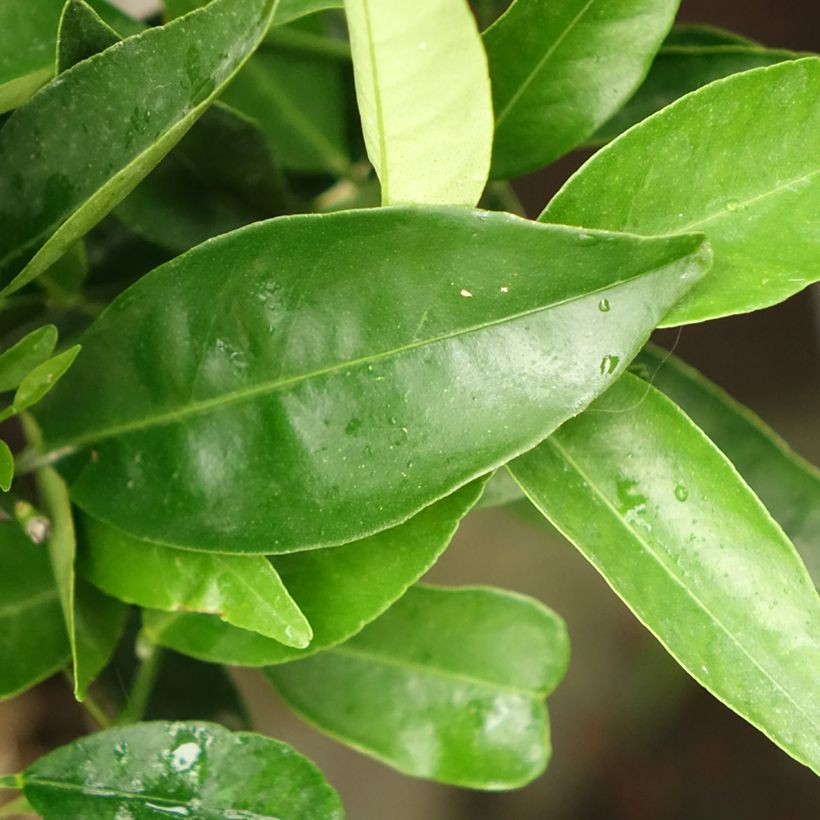

Plant habit
Fruit
Flowering
Foliage
Botanical data
Citrus
Fortunella margarita x Citrus clementina
Kucle
Rutaceae
Kumquat x Clementine, Calamondin
Cultivar or hybrid
Other Citrus trees
Planting and care
Planting in the ground: The 'Kucle' appreciates light, deep, fertile, slightly acidic to neutral, non-calcareous soils that remain moist during the growing season. It is only reasonable to plant it in the ground if you live in an area unaffected by severe frost. Beware, both the fruit and the tree will freeze at -4 to -5°C. The best time to plant is in early spring, in March and April. Be careful not to bury the collar. Citrus trees are naturally hungry: in any case, consider adding well-decomposed compost or "special citrus" fertilizer. Choose a sunny but not scorching location for your bush, sheltered from the wind to prevent leaf drying, and away from any spray.
Planting in a pot: In all other regions, the Kucle will be planted in a pot that you can keep indoors permanently but will appreciate being outdoors in summer. Planting in a pot or repotting takes place at the end of summer. Choose a pot slightly larger than the root system, as citrus trees do not like to feel cramped. Moisten the root ball well. To improve drainage, line the bottom of the pot with clay pebbles. Loosen the root ball and mix two-thirds garden soil with one-third "special citrus" potting soil. Water generously. Prefer pots made of terracotta or breathable material.
Citrus trees need plenty of water to thrive. Your 'Kucle', especially when kept in an apartment, should be watered daily and the soil should remain moist but not waterlogged at all times. Similarly, make sure to regularly provide it with the fertilizer it needs: every 6 months for slow-release granular fertilizer or every 3 waterings for liquid fertilizer.
Planting period
Intended location
Care
-
, onOrder confirmed
Reply from on Promesse de fleurs
Mediterranean fruit trees
Haven't found what you were looking for?
Hardiness is the lowest winter temperature a plant can endure without suffering serious damage or even dying. However, hardiness is affected by location (a sheltered area, such as a patio), protection (winter cover) and soil type (hardiness is improved by well-drained soil).

Photo Sharing Terms & Conditions
In order to encourage gardeners to interact and share their experiences, Promesse de fleurs offers various media enabling content to be uploaded onto its Site - in particular via the ‘Photo sharing’ module.
The User agrees to refrain from:
- Posting any content that is illegal, prejudicial, insulting, racist, inciteful to hatred, revisionist, contrary to public decency, that infringes on privacy or on the privacy rights of third parties, in particular the publicity rights of persons and goods, intellectual property rights, or the right to privacy.
- Submitting content on behalf of a third party;
- Impersonate the identity of a third party and/or publish any personal information about a third party;
In general, the User undertakes to refrain from any unethical behaviour.
All Content (in particular text, comments, files, images, photos, videos, creative works, etc.), which may be subject to property or intellectual property rights, image or other private rights, shall remain the property of the User, subject to the limited rights granted by the terms of the licence granted by Promesse de fleurs as stated below. Users are at liberty to publish or not to publish such Content on the Site, notably via the ‘Photo Sharing’ facility, and accept that this Content shall be made public and freely accessible, notably on the Internet.
Users further acknowledge, undertake to have ,and guarantee that they hold all necessary rights and permissions to publish such material on the Site, in particular with regard to the legislation in force pertaining to any privacy, property, intellectual property, image, or contractual rights, or rights of any other nature. By publishing such Content on the Site, Users acknowledge accepting full liability as publishers of the Content within the meaning of the law, and grant Promesse de fleurs, free of charge, an inclusive, worldwide licence for the said Content for the entire duration of its publication, including all reproduction, representation, up/downloading, displaying, performing, transmission, and storage rights.
Users also grant permission for their name to be linked to the Content and accept that this link may not always be made available.
By engaging in posting material, Users consent to their Content becoming automatically accessible on the Internet, in particular on other sites and/or blogs and/or web pages of the Promesse de fleurs site, including in particular social pages and the Promesse de fleurs catalogue.
Users may secure the removal of entrusted content free of charge by issuing a simple request via our contact form.
The flowering period indicated on our website applies to countries and regions located in USDA zone 8 (France, the United Kingdom, Ireland, the Netherlands, etc.)
It will vary according to where you live:
- In zones 9 to 10 (Italy, Spain, Greece, etc.), flowering will occur about 2 to 4 weeks earlier.
- In zones 6 to 7 (Germany, Poland, Slovenia, and lower mountainous regions), flowering will be delayed by 2 to 3 weeks.
- In zone 5 (Central Europe, Scandinavia), blooming will be delayed by 3 to 5 weeks.
In temperate climates, pruning of spring-flowering shrubs (forsythia, spireas, etc.) should be done just after flowering.
Pruning of summer-flowering shrubs (Indian Lilac, Perovskia, etc.) can be done in winter or spring.
In cold regions as well as with frost-sensitive plants, avoid pruning too early when severe frosts may still occur.
The planting period indicated on our website applies to countries and regions located in USDA zone 8 (France, United Kingdom, Ireland, Netherlands).
It will vary according to where you live:
- In Mediterranean zones (Marseille, Madrid, Milan, etc.), autumn and winter are the best planting periods.
- In continental zones (Strasbourg, Munich, Vienna, etc.), delay planting by 2 to 3 weeks in spring and bring it forward by 2 to 4 weeks in autumn.
- In mountainous regions (the Alps, Pyrenees, Carpathians, etc.), it is best to plant in late spring (May-June) or late summer (August-September).
The harvesting period indicated on our website applies to countries and regions in USDA zone 8 (France, England, Ireland, the Netherlands).
In colder areas (Scandinavia, Poland, Austria...) fruit and vegetable harvests are likely to be delayed by 3-4 weeks.
In warmer areas (Italy, Spain, Greece, etc.), harvesting will probably take place earlier, depending on weather conditions.
The sowing periods indicated on our website apply to countries and regions within USDA Zone 8 (France, UK, Ireland, Netherlands).
In colder areas (Scandinavia, Poland, Austria...), delay any outdoor sowing by 3-4 weeks, or sow under glass.
In warmer climes (Italy, Spain, Greece, etc.), bring outdoor sowing forward by a few weeks.

































